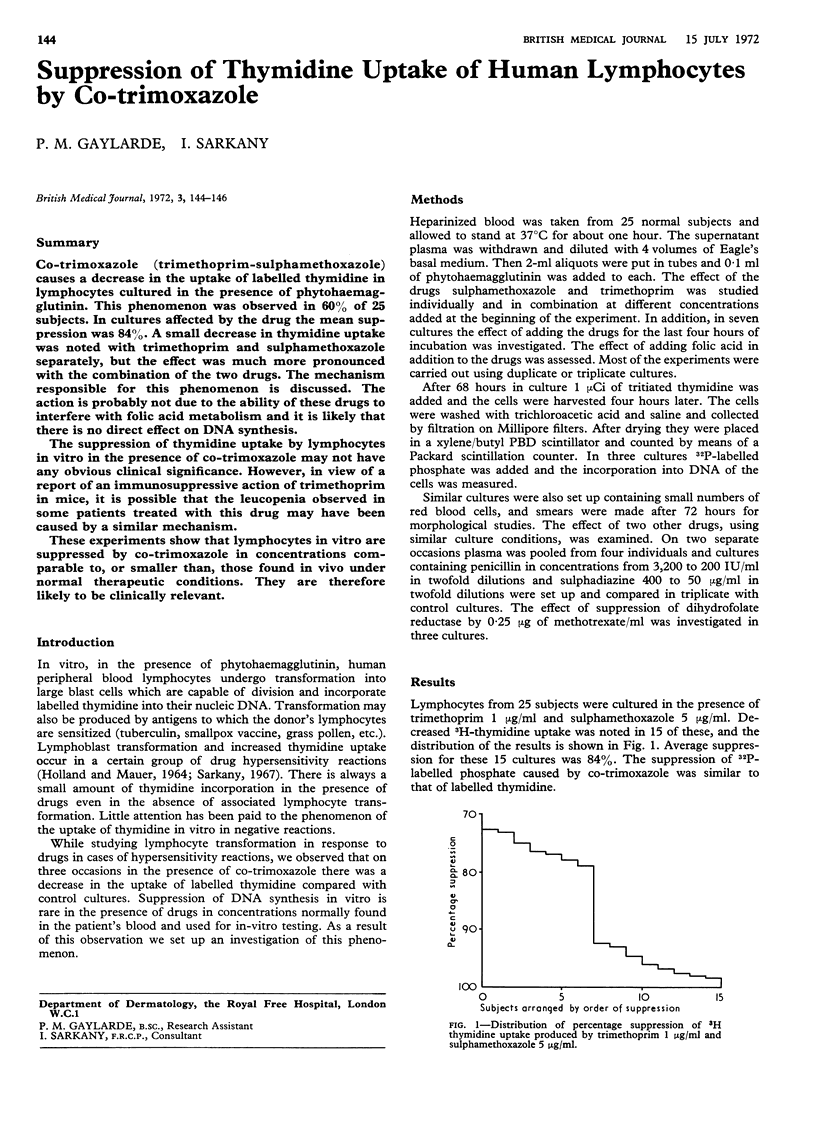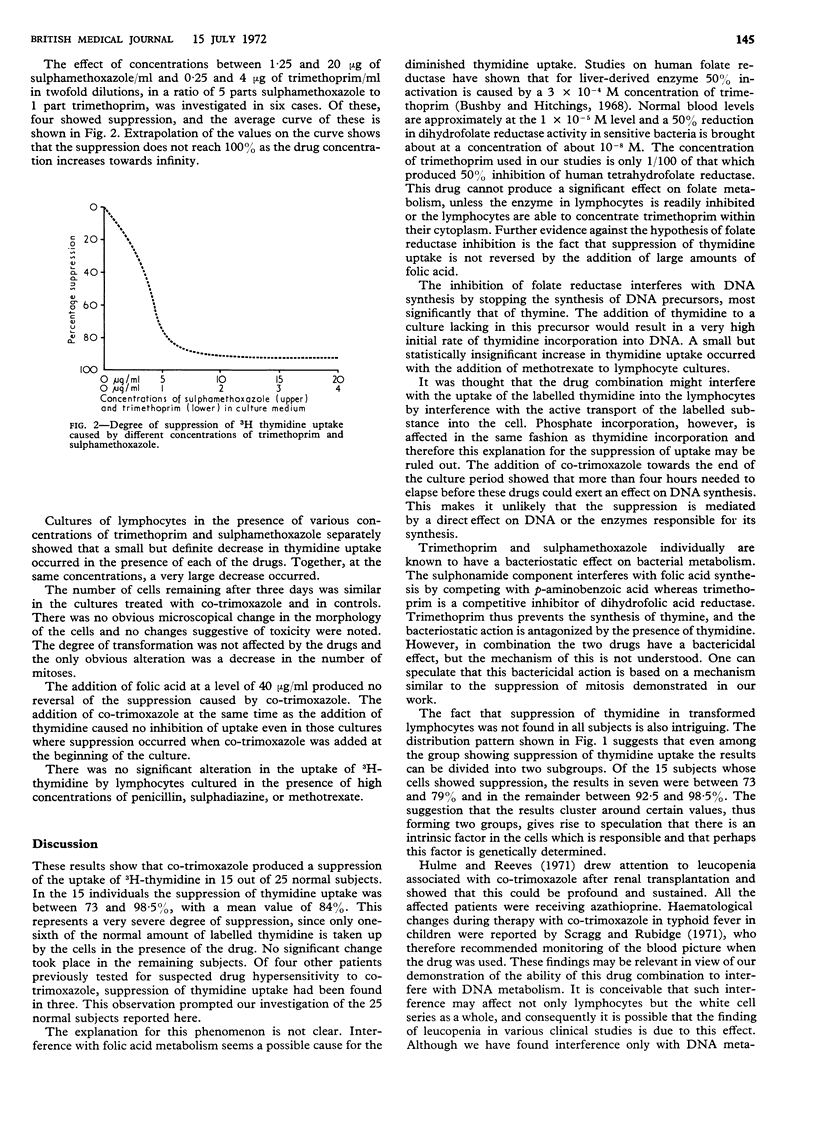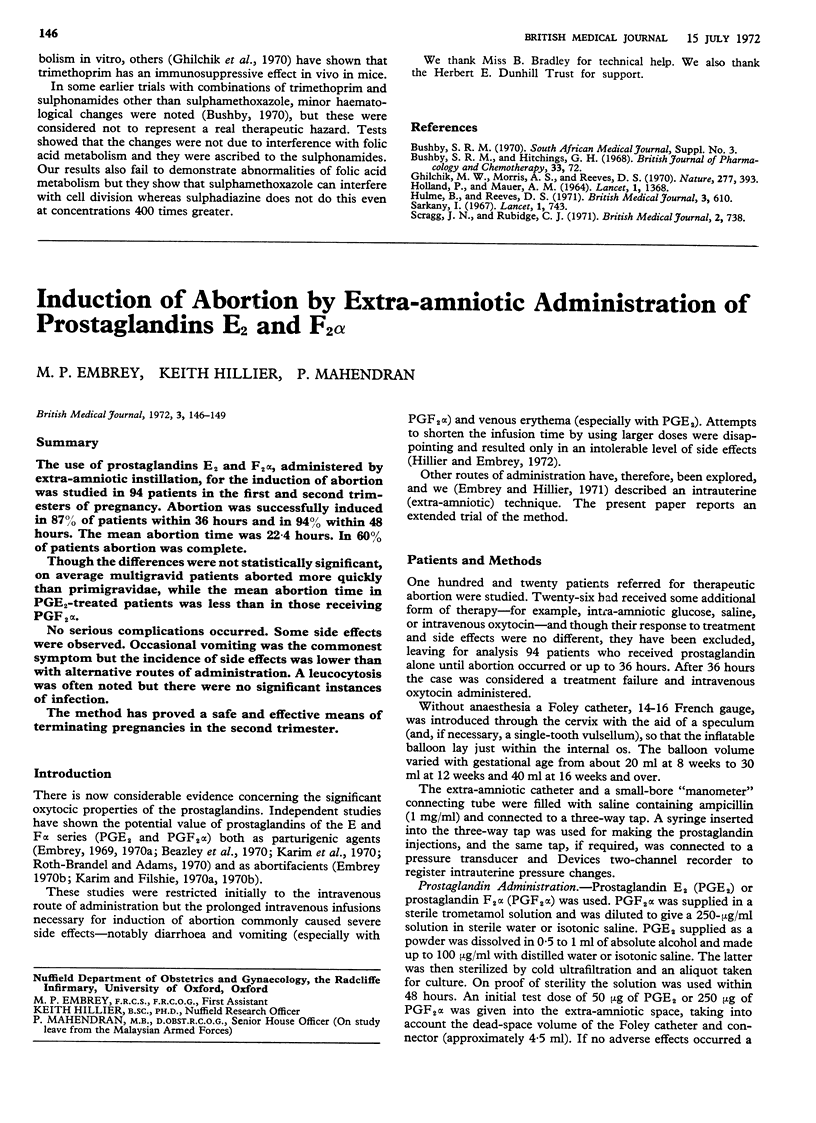Abstract
Co-trimoxazole (trimethoprim-sulphamethoxazole) causes a decrease in the uptake of labelled thymidine in lymphocytes cultured in the presence of phytohaemagglutinin. This phenomenon was observed in 60% of 25 subjects. In cultures affected by the drug the mean suppression was 84%. A small decrease in thymidine uptake was noted with trimethoprim and sulphamethoxazole separately, but the effect was much more pronounced with the combination of the two drugs. The mechanism responsible for this phenomenon is discussed. The action is probably not due to the ability of these drugs to interfere with folic acid metabolism and it is likely that there is no direct effect on DNA synthesis.
The suppression of thymidine uptake by lymphocytes in vitro in the presence of co-trimoxazole may not have any obvious clinical significance. However, in view of a report of an immunosuppressive action of trimethoprim in mice, it is possible that the leucopenia observed in some patients treated with this drug may have been caused by a similar mechanism.
These experiments show that lymphocytes in vitro are suppressed by co-trimoxazole in concentrations comparable to, or smaller than, those found in vivo under normal therapeutic conditions. They are therefore likely to be clinically relevant.
Full text
PDF


Selected References
These references are in PubMed. This may not be the complete list of references from this article.
- Bushby S. R., Hitchings G. H. Trimethoprim, a sulphonamide potentiator. Br J Pharmacol Chemother. 1968 May;33(1):72–90. doi: 10.1111/j.1476-5381.1968.tb00475.x. [DOI] [PMC free article] [PubMed] [Google Scholar]
- Ghilchik M. W., Morris A. S., Reeves D. S. Immunosuppressive powers of the antibacterial agent trimethoprim. Nature. 1970 Jul 25;227(5256):393–394. doi: 10.1038/227393a0. [DOI] [PubMed] [Google Scholar]
- HOLLAND P., MAUER A. M. DRUG-INDUCED IN-VITRO STIMULATION OF PERIPHERAL LYMPHOCYTES. Lancet. 1964 Jun 20;1(7347):1368–1369. doi: 10.1016/s0140-6736(64)92046-x. [DOI] [PubMed] [Google Scholar]
- Hulme B., Reeves D. S. Leucopenia associated with trimethoprim-sulphamethoxazole after renal transplantation. Br Med J. 1971 Sep 11;3(5775):610–612. doi: 10.1136/bmj.3.5775.610. [DOI] [PMC free article] [PubMed] [Google Scholar]
- Sarkany I. Lymphocyte transformation in drug hypersensitivity. Lancet. 1967 Apr 8;1(7493):743–745. doi: 10.1016/s0140-6736(67)91362-1. [DOI] [PubMed] [Google Scholar]
- Scragg J. N., Rubidge C. J. Trimethoprim and sulphamethoxazole in typhoid fever in children. Br Med J. 1971 Sep 25;3(5777):738–741. doi: 10.1136/bmj.3.5777.738. [DOI] [PMC free article] [PubMed] [Google Scholar]


